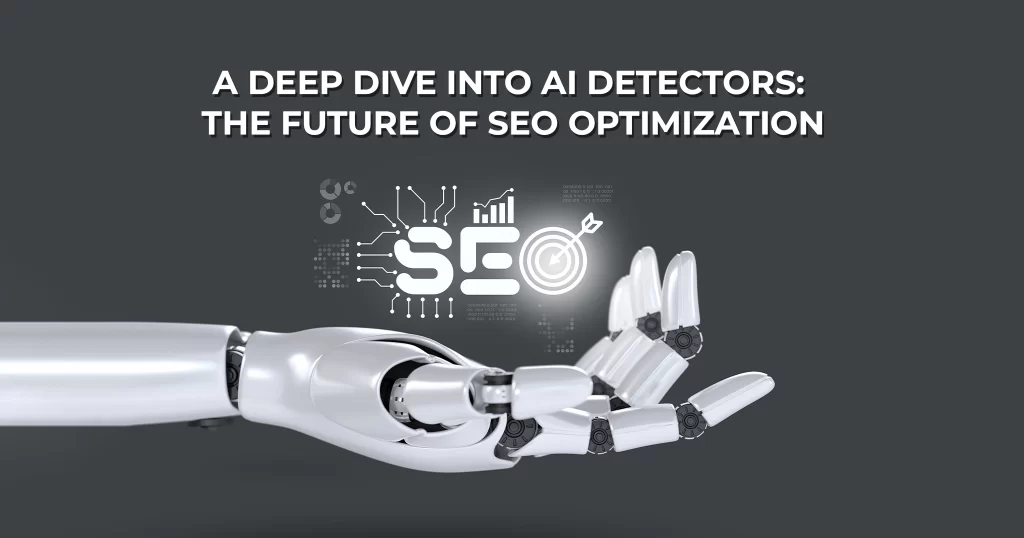Artificial intelligence (AI) has been transformative for almost every industry. One field that it has influenced probably most is search engine optimization (SEO). Content creation has been affected by AI more than anything.
Tools like ChatGPT have drastically transformed the way content is produced. You can use these to create compelling content by giving a few simple prompts. Amidst all this, there is also a need for tools that can detect whether a certain creative product is original or the work of AI.
AI detectors are the tools you can use for this purpose. This article is going to deep dive into AI detectors. We are going to see what they are & how they work. Keep on reading till the end.
What are AI Detectors?
AI detectors process and analyze content by looking at its structural features and comparing these to existing datasets of human and AI-created content. This helps them identify the involvement of AI in the content.
These tools use machine learning and algorithms to examine the content for predictability, structure, and language. Thus, these tools enable businesses to ensure the content they use for SEO is original, engaging, and reliable. Agencies for e-commerce web design in Dubai are using AI detectors to detect AI-generated content before publishing it on the website.
Key Technologies Behind AI Detection
The following technologies play a key role in the detection of AI in any given content
- Machine Learning
Machine learning identifies patterns in large datasets relating to the structure and context of the content. This tool also uses predictive analysis to determine which word should appear next in a sentence.
- Natural Language Processing
NLP allows for the understanding of structural nuances of the provided content by the AI detectors. By using NLP, AI detectors can figure out linguistic choices and contextual cues in content that are identical to existing AI-generated datasets.
Accuracy of AI Content Detectors
AI detector tools are in their infancy and they don’t grasp the nuances and creativity of language like humans. This sometimes leads to inaccurate AI detection results. Moreover, a rapid influx of AI content generators is also a big issue which is making it hard for AI detectors to catch up.
This means that you cannot trust these tools 100% for detecting AI in any given content. But at the same time, using these tools is still better than manually detecting AI from content which tends to be very unreliable and time-consuming. This is the primary reasons why companies for digital marketing and web design in Dubai tend to opt for such tools for AI detection.
How Do AI Content Detectors Work?
The following techniques are most prevalent for AI content detection tools
- Classifiers
The job of a classifier is to sort the given content into predetermined categories. This ML model makes use of the labeled training data to arrange the new content accordingly.
These models allow you to uncover similar structures and patterns independently which makes them less resource-intensive.
Most classifiers used the following machine learning algorithms for AI detection
- Random Forest
- Support Vector Machines
- Decision Trees
- Logistic Regression
A classifier works by examining the main features of the content and identifying patterns commonly present between the human and AI-generated content.
After analysis, it gives a confidence score showing the possibility or extent of the content being a product of AI.
- Embeddings
It involves the representation of words and phrases as vectors in a high-dimensional space. This model uses the concepts of vector representation and the semantic web of meaning.
After embedding the content into vectors, it is fed to a model that can separate between AI and human-generated content.
The said model performs word frequency analysis, syntactic analysis, semantic, and N-gram analysis to examine the originality of the content.
- Perplexity
Perplexity measures the surprise of an AI model when encountered with AI-generated content. If AI is surprised by the language and structure of content, it indicates that it could not have created it.
A content with high perplexity is more likely a human creation. Perplexity model gives better results when used in combination with contextual analysis.
- Burstiness
It works similarly to perplexity with more focus on entire sentences. It examines variations in the length, structure, and complexity of the content. These features vary greatly in content created by humans and AI.
AI-generated content is characterized by monotony and low burstiness.
Final Thoughts
AI detectors are crucial if you aim to reduce the quantity of low-quality content. This is an important factor for creating effective business web design in Dubai. Not checking the content that you use for SEO for AI is not recommended. AI-generated content can do more harm than good to your SEO efforts.
AI technologies have become quite powerful. It is getting hard to distinguish between human & AI-generated content. This challenge can be overcome to some extent with the help of AI detectors.
You also need to remember to not rely on the judgment of these detectors 100%. These tools are not yet perfect enough to understand all the intricacies of human language.
However, they can still provide you with a good estimation of the originality of the content and that can reflect positively in your SEO efforts.



